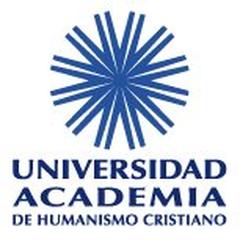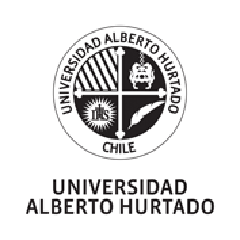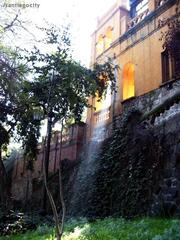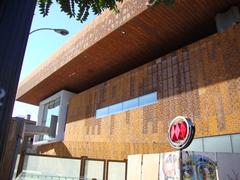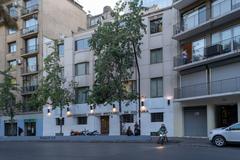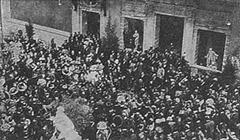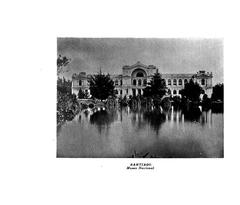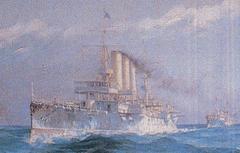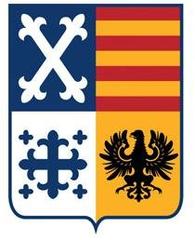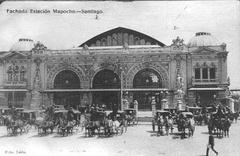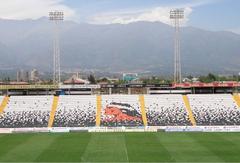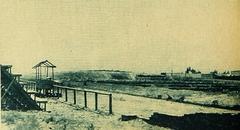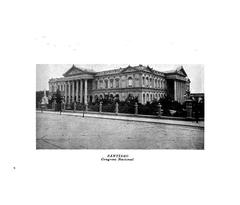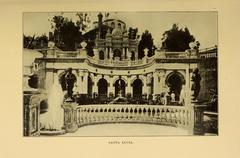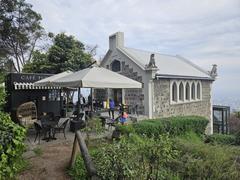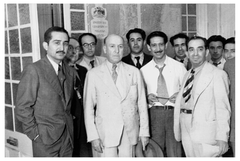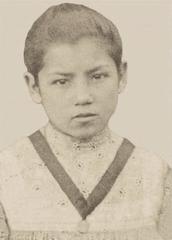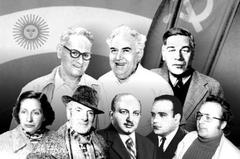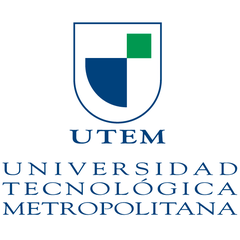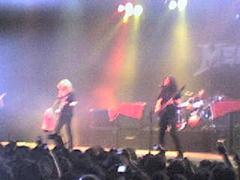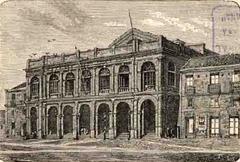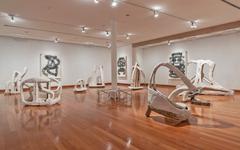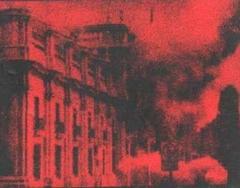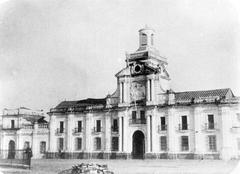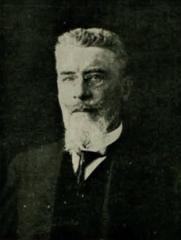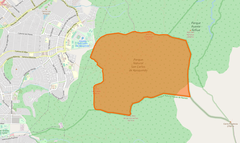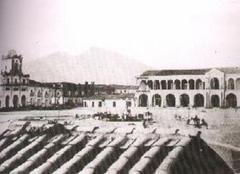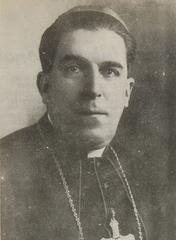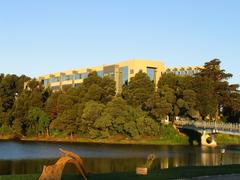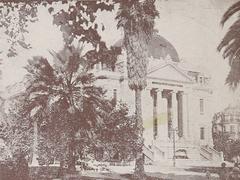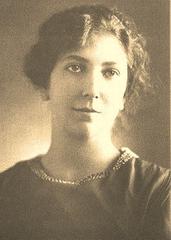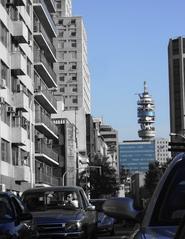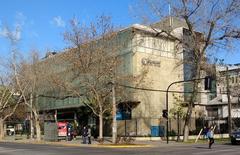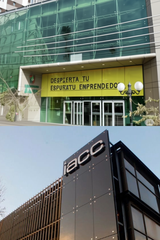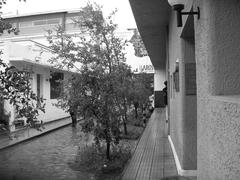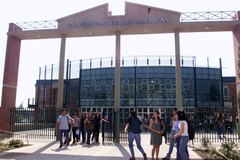Casa Espínola Pereira, Santiago, Chile: Visiting Hours, Tickets, and Historical Sites Guide
Date: 14/06/2025
Introduction
Casa Espínola Pereira is a distinguished landmark in Santiago, Chile, acclaimed for its architectural grandeur and cultural significance. Located in the Civic Quarter, this historic mansion exemplifies French neoclassical design and stands as a testament to the city’s layered history. Originally a private residence, later repurposed for various institutional uses, and recently declared a National Monument, Casa Espínola Pereira offers visitors a unique opportunity to engage with Santiago’s urban evolution and heritage.
This comprehensive guide details the mansion’s history, architectural features, visiting hours, ticket information, practical travel tips, and its place within Santiago’s network of historical sites. Whether you are a history enthusiast, architecture lover, or a traveler seeking authentic cultural experiences, this article will equip you to make the most of your visit to one of Santiago’s most emblematic monuments (ArchDaily; WelcomeChile).
Table of Contents
- Historical Background and Urban Context
- Architectural Significance and Heritage Value
- Visiting Casa Espínola Pereira: Hours, Tickets, and Accessibility
- Nearby Attractions and Travel Tips
- Urban Renewal, Social Dynamics, and Heritage Conservation
- Frequently Asked Questions (FAQ)
- Explore More: Related Sites and Resources
- Conclusion
- References
Historical Background and Urban Context
Colonial Foundations and Urban Evolution
Founded in 1541 by Pedro de Valdivia, Santiago’s strategic location along the Mapocho River shaped its early development. The colonial city was organized around the Plaza de Armas, with architecture characterized by adobe structures and central courtyards. Land distribution fostered an elite class whose influence persisted through centuries of urban growth (Experience Chile; ArchDaily).
19th and 20th Century Transformation
Post-independence, Santiago experienced modernization driven by economic booms and a desire to emulate European urbanism. The city’s elite built grand neoclassical residences and public buildings, especially during the centenary celebrations in 1910. Modernization projects, such as Vicuña Mackenna’s transformation of Santa Lucía Hill, reinforced Santiago’s status as a cosmopolitan capital (ArchDaily).
The Civic Quarter and Casa Espínola Pereira
The Civic Quarter (Barrio Cívico), home to Casa Espínola Pereira, emerged in the early 20th century as the administrative heart of Santiago. With landmarks like La Moneda Palace and the National Library nearby, the area reflects the consolidation of state power and national identity through monumental architecture (Mapcarta).
Architectural Significance and Heritage Value
Casa Espínola Pereira is a prime example of French neoclassical architecture, with symmetrical façades, classical columns, ornate interiors, and refined details. The mansion was remodeled in the 1920s by architect Alberto Cruz Montt, whose influence is evident in its grand central hall, formal dining rooms, and period finishes. Its evolution from private residence to headquarters for the Central Unitaria de Trabajadores (CUT) reflects the democratization and adaptive reuse of Santiago’s historic buildings (ArchDaily).
Declared a National Monument in 2024, Casa Espínola Pereira is protected by preservation laws, ensuring the maintenance of its original features and historical integrity (LAC Geographic).
Visiting Casa Espínola Pereira: Hours, Tickets, and Accessibility
Visiting Hours
- General Opening: Tuesday to Sunday, 10:00 AM to 6:00 PM
- Closed: Mondays and certain national holidays
- Note: Public access is mainly available during heritage festivals (e.g., May, September) and special events. Always check the official website or contact the venue for up-to-date schedules.
Admission and Tickets
- Admission: Free during public events; modest fees may apply for special exhibitions or guided tours
- Booking: Recommended for guided tours, which can be scheduled via the CUT or local tourism offices
- Discounts: Available for students, seniors, and children during ticketed events (Worldly Adventurer)
Accessibility
- Physical Access: The building is partially accessible; ramps and elevators are present, but some areas may remain limited due to preservation constraints
- Public Transport: Easily accessible via Metro stations La Moneda and Universidad de Chile, as well as major bus lines (Santiago Turismo)
Nearby Attractions and Travel Tips
- Nearby Sites: La Moneda Palace, National Library, Santa Lucía Hill, Museo Chileno de Arte Precolombino
- Dining: Lastarria and Bellavista neighborhoods offer a range of cafés and restaurants, including vegan and vegetarian options (Vegan Family Adventures)
- Transportation: Walking and cycling are pleasant options in central Santiago; parking is limited, so public transport is recommended
- Travel Tips: Wear comfortable shoes, carry water, and plan visits for early morning or late afternoon to avoid crowds
Urban Renewal, Social Dynamics, and Heritage Conservation
Casa Espínola Pereira exemplifies Santiago’s efforts to balance modernization with heritage preservation. The Civic Quarter has benefited from urban renewal policies that encourage the adaptive reuse of historic buildings for cultural and social purposes. These spaces now host exhibitions, educational events, and civic gatherings, underscoring their evolving role in contemporary society (Academia.edu).
The Mapocho River, adjacent to the Civic Quarter, has also become a focal point for urban projects aimed at enhancing public space and connectivity (Academia.edu).
Frequently Asked Questions (FAQ)
Q: What are the visiting hours for Casa Espínola Pereira?
A: Tuesday–Sunday, 10:00 AM–6:00 PM, with closures on Mondays and major holidays. Always confirm ahead for special events.
Q: Is there an admission fee?
A: Admission is often free during public heritage events; check for any fees for special exhibitions or guided tours.
Q: Are guided tours available?
A: Yes, typically during festivals or by appointment. Tours are offered in Spanish and English.
Q: Is the site accessible for people with disabilities?
A: Accessibility is partial; some historic areas may be limited, but ramps and elevators are available in main areas.
Q: How do I get there?
A: The mansion is accessible via the La Moneda and Universidad de Chile Metro stations and several bus lines.
Explore More: Related Sites and Resources
- La Moneda Palace
- Santa Lucía Hill
- National Library of Chile
- Santiago Historical Sites
- Cultural Events and Tours
Conclusion
Casa Espínola Pereira is a remarkable example of Santiago’s architectural and cultural heritage, offering visitors an immersive experience of Chile’s historical evolution. Its French neoclassical elegance, layered history, and adaptive reuse as a social and cultural hub make it a must-visit destination in the Civic Quarter. The mansion’s preservation as a National Monument ensures its continued role in fostering dialogue between the past and present.
Plan your visit by confirming hours and event schedules, explore neighboring historical sites, and engage with Santiago’s vibrant urban culture. For real-time updates, guided tour bookings, and more travel insights, download the Audiala app and follow official tourism channels (Santiago Turismo).
References
- Santiago Architecture: City 41 Buildings, Complexes, and Parks to Visit in the Chilean Capital, 2024, ArchDaily
- Santiago History, Experience Chile
- The Cultural Landscape of Chile, LAC Geographic
- Things to Do in Santiago Chile, Worldly Adventurer
- Tourist Information Office, Santiago Turismo
- Neoclassical Architecture in Santiago, WelcomeChile
- MAPOCHO 42K: Riparian Continuity as Social Connection for Santiago de Chile, 2020, Academia.edu
- The Mapocho River Basins: Shifting Urban Significance, Academia.edu
- Chile Travel Advice, Rough Guides
- Santiago Historical Sites to Visit, GPSmyCity
- Santiago Chile Cultural Events and Tours, SantiagoChile.com
- Santiago Travel Guide, Fodor’s
